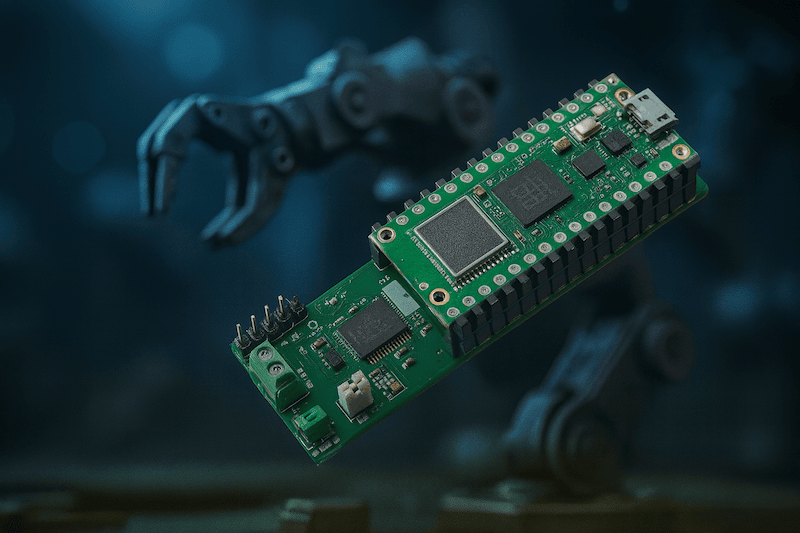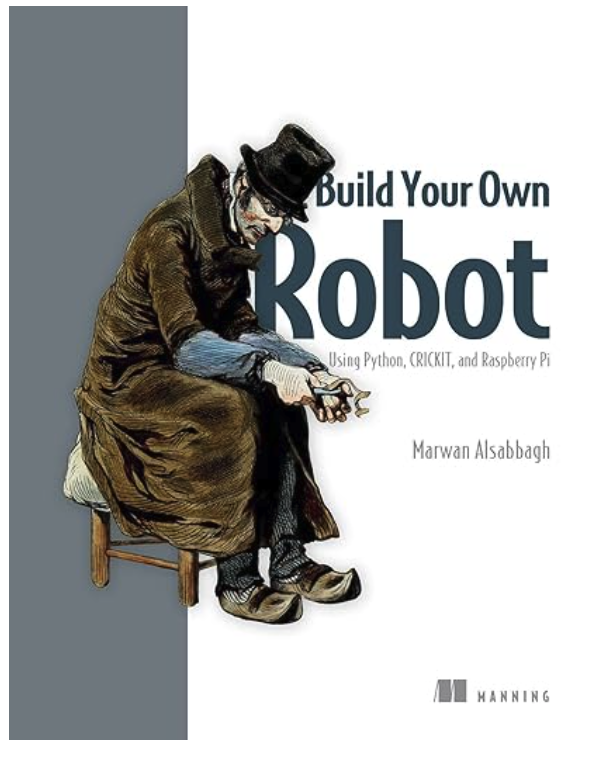Recent Posts
CANPico V2 in Action: Compact CAN-Enabled Projects for Robotics and Automation
Posted by on
 The CANPico V2 is a small but powerful development platform that brings Controller Area Network (CAN) capability directly into your embedded projects. Built on the Raspberry Pi Pico microcontroller, this board combines affordability with professional-grade communication features—making it an ideal tool for robotics and automation enthusiasts. Its compact size and straightforward interface enable developers to rapidly prototype ideas without the bulk or complexity of larger systems.
The CANPico V2 is a small but powerful development platform that brings Controller Area Network (CAN) capability directly into your embedded projects. Built on the Raspberry Pi Pico microcontroller, this board combines affordability with professional-grade communication features—making it an ideal tool for robotics and automation enthusiasts. Its compact size and straightforward interface enable developers to rapidly prototype ideas without the bulk or complexity of larger systems.
In this post, we’ll explore how the CANPico V2 can be applied in real-world scenarios, from building smart robotic controllers to enabling lightweight automation networks.
Why CAN Matters in Robotics and Automation
CAN Bus has long been the backbone of reliable, real-time communication in automotive and industrial systems. Its resilience against electrical noise, fault tolerance, and deterministic behavior make it just as valuable in robotics and automation. Whether you’re connecting motor controllers, environmental sensors, or safety devices, CAN ensures that messages are delivered accurately and on time—even under demanding conditions.
For robotics projects, this means precise motor control and synchronized operation of multiple subsystems. For automation, it enables networks of sensors and actuators to cooperate seamlessly.
CANPico V2: A Compact CAN-Enabled Platform
The CANPico V2 integrates a Raspberry Pi Pico with a built-in CAN transceiver, providing a low-cost and developer-friendly path to CAN-enabled projects. Some highlights include:
-
Compact footprint: easy to mount on robots or inside small enclosures.
-
Raspberry Pi Pico ecosystem: access to MicroPython, C/C++, and a large community of developers.
-
Integrated CAN hardware: eliminates the need for separate shields or breakout boards.
-
Dual-core processor: supports real-time CAN handling alongside application logic.
This combination makes the CANPico V2 especially suitable for mobile and distributed systems where space and efficiency are critical.
Project 1: Robotic Actuator Controller
One of the most straightforward uses of the CANPico V2 is as a controller for robotic actuators. By connecting servo or DC motor drivers over CAN, you can coordinate movement across multiple joints or wheels. For example, a small mobile robot could use one CANPico V2 as a master node to issue speed commands, while additional CANPico V2 units act as motor controllers at each wheel.
Advantages of this approach include reduced wiring complexity and more reliable communication compared to UART or I²C. Developers can also monitor motor status, temperature, or fault codes through the same CAN bus.
Project 2: Sensor Fusion in Automation Systems
In automation, data from multiple sensors must often be aggregated and processed in real time. With the CANPico V2, environmental sensors such as temperature, humidity, or light modules can broadcast their data onto the CAN network. Another node can collect, fuse, and analyze the data for decision-making.
A practical application could be an automated greenhouse: individual CAN nodes measure soil moisture and light levels, while a central controller activates irrigation pumps or adjusts lighting. This modular architecture makes it easy to expand the system as new requirements arise.
Project 3: Lightweight CAN Gateway
The CANPico V2 can also function as a compact gateway between a CAN network and other interfaces, such as USB or serial. This allows developers to log CAN traffic for debugging, or forward selected messages to a host PC for analysis.
In robotics, this could be used to bridge a CAN-enabled robot to a base station for monitoring performance metrics. In automation, the same gateway could link a CAN-based sensor network to a supervisory system. The low power consumption and small size make it possible to mount the gateway directly on mobile robots or in distributed field units.
Expanding Beyond Prototypes
Although the CANPico V2 is often used for prototyping, its reliability and simplicity make it viable for small production runs and field deployments. By pairing it with rugged enclosures and stable power supplies, it can handle real-world conditions in educational robots, lab automation, or light industrial applications.
Because it supports both MicroPython and C/C++, developers can choose between rapid prototyping and optimized performance. This dual capability makes it easier to start quickly and later refine the code for efficiency.
Conclusion
The CANPico V2 proves that embedded CAN solutions don’t have to be large, expensive, or complex. From robotic actuator controllers to distributed automation systems, it opens the door to compact, scalable projects where reliability and coordination are key. By embracing this platform, developers can explore the power of CAN in new contexts—bringing professional-grade communication to hobbyist robots, research prototypes, and industrial automation alike. More information...
References
- Copperhill Technologies – Combining CAN Bus and Microcontroller Power: The CANPico V2
- Copperhill Technologies – CAN Bus Development with Raspberry Pi vs. Arduino Due
- Copperhill Technologies – Blog: CAN XL in the Automotive Industry
Build Your Own Robot is your gateway into the exciting world of robotics—accessible, fun, and budget-friendly. Using easy-to-find hardware and free open-source software, you’ll bring a real robot to life with nothing more than basic tools like a screwdriver.
Inside, you’ll discover how to:
-
Give your robot vision: use cameras to capture photos, process images, and add simple computer vision.
-
Make it move: coordinate DC motors for reliable locomotion.
-
Control it remotely: build a web app for browser-based control and set up joystick input for hands-on navigation.
-
Teach it to recognize objects: program QR code scanning and experiment with face detection.
No soldering, complex wiring, or advanced electronics knowledge is required—just a willingness to experiment and some basic Python skills. Along the way, you’ll work directly with DC motors, touch sensors, joystick controllers, and custom scripts, turning raw components into a fully interactive robot.
By the end, you’ll have not only a working robot but also the foundational skills to explore robotics further, whether for fun, education, or your next big project. More information...
 Loading... Please wait...
Loading... Please wait...

